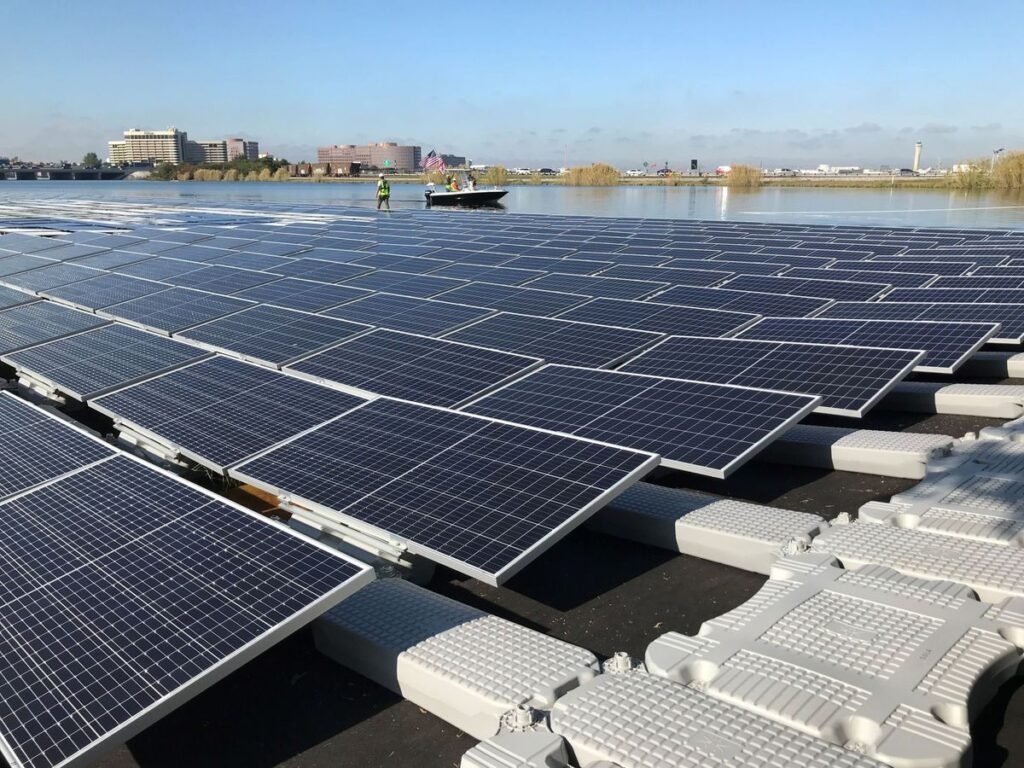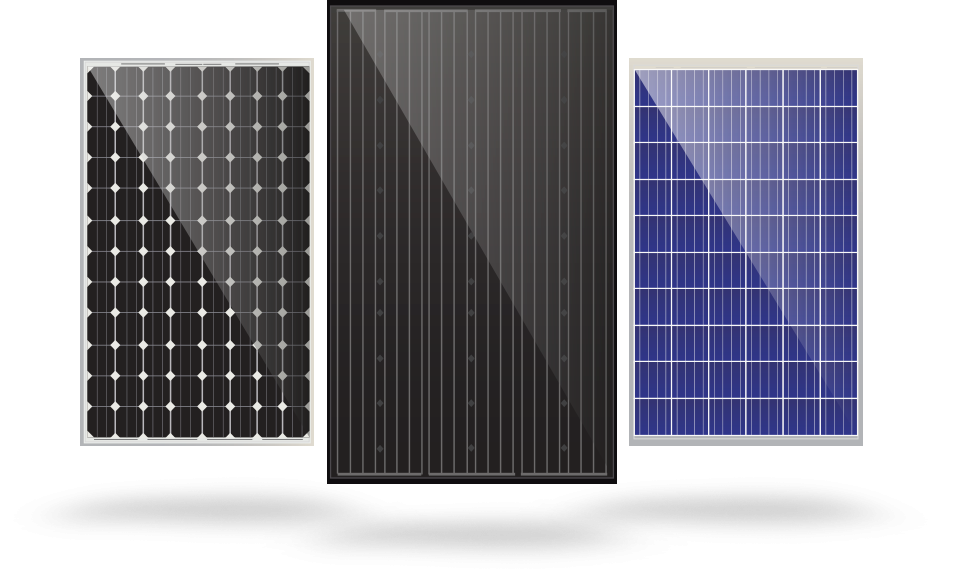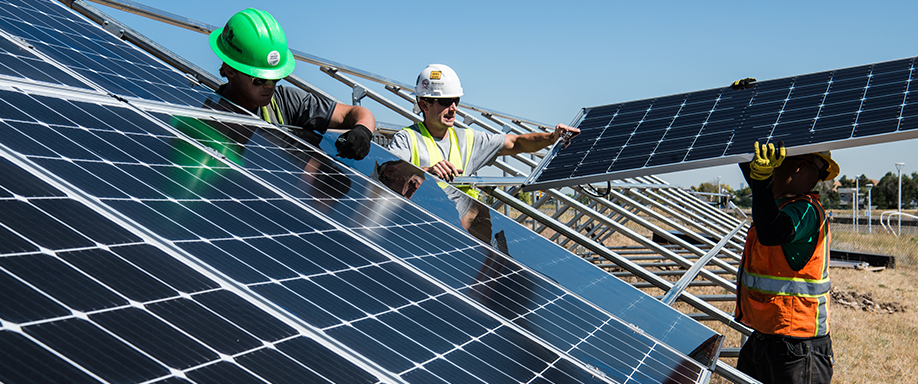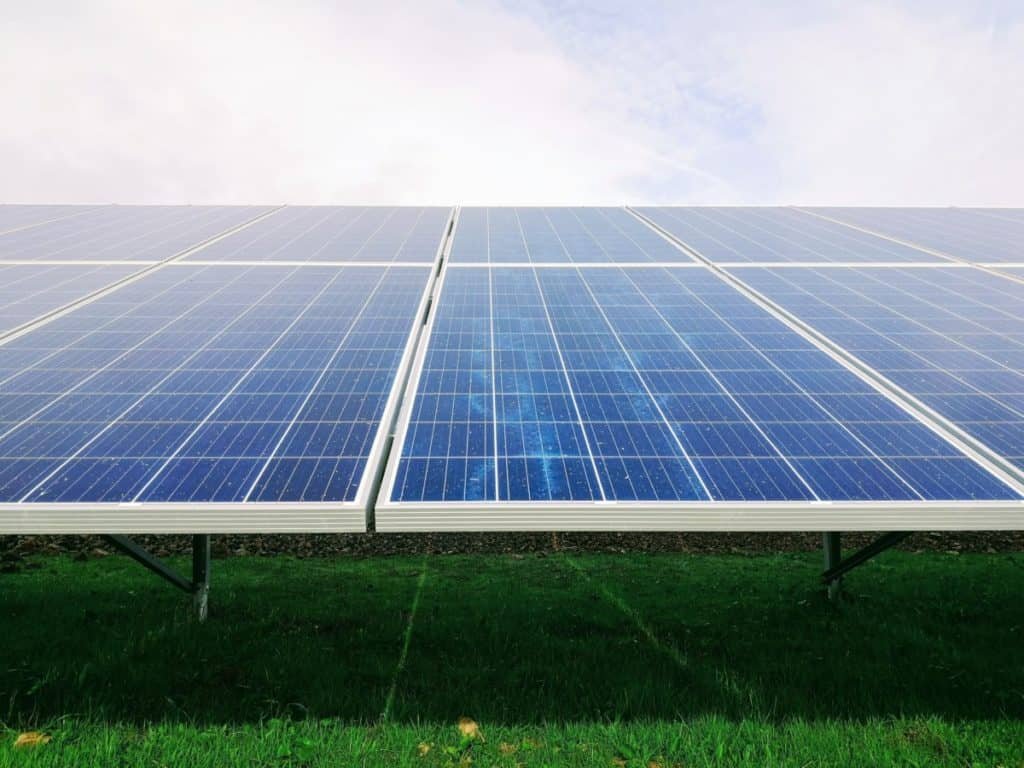
Transparent solar panels
Solar technology is advancing more and more day by day, introducing new innovations, new solar panel technologies and one of the types of solar panels are transparent solar panels .
In this article you will find a lot of information about transparent solar panels.
transparent solar panels
They are transparent and at first glance look like ordinary glass. However, your chances are much higher. Colorless solar panels could revolutionize the way clean energy is produced.
The first reports of a revolutionary solution appeared a few years ago, but the technology presented then was more of a curiosity than a product ready for its market debut. This was due to the fact that the transparent cells had a very low efficiency , amounting to about 1 percent.
The future of solar panels
Imagine a world where we could generate electricity using the surface of our windows, smartphones, the sunroof of our car, or the glass roof of our office building. What sounds like a distant dream is on its way to becoming a reality thanks to transparent solar panels .
Conventional solar panels, more specifically photovoltaic solar panels, absorb sunlight and convert photons (particles of sunlight) into usable energy. The difficulty with making transparent solar panels is that sunlight passes through the transparent material.
This means that the process that generates electricity in the solar cell cannot start because no light is absorbed. This article presents two interesting attempts to overcome this obstacle: partially transparent panels and fully transparent panels using organic salts, detailing the advantages and disadvantages of solar panels of this type.
Transparent solar panels windows that generate electricity
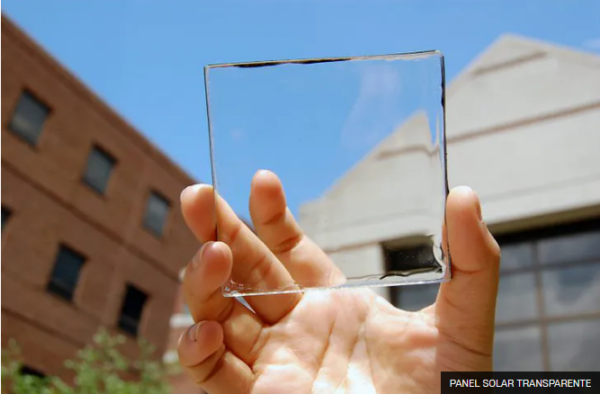
Transparent solar panels allow expanding the horizons of photovoltaic systems towards new and more varied fields of application both in the residential, productive and commercial domestic sectors.
Translucent solar panels can be made of plastic or glass materials and have the peculiarity of filtering natural sunlight through their surface with different degrees of transparency.
This type of solar panel is increasingly used in sustainable construction and not only: in various production areas, from solar greenhouses to sheds.
What are transparent solar panels?
Transparent solar panels are being developed by a group of researchers at the University of Michigan with the feature that would convert sunlight into electricity while preserving the optical properties of glass.
The technology of the transparent solar panel would allow, for example, to transform the windows of houses into true sources of solar energy for the production of electricity.
American scientists have created a plastic material capable of capturing the energy that emanates from the sun, photons, and transforming them into electrical energy thanks to a technology called luminescent solar concentrator, which is not new, but for the first time it has been possible to keep the layer transparent to light.
The transparent solar panel is based on organic molecules capable of absorbing the sun’s rays with an invisible wavelength, beyond infrared and ultraviolet rays.
“We can modify these materials to capture near-infrared and ultraviolet radiation and then shine at another wavelength,” said Richard Lunt, who led the research. The luminescence then passes to the edges of the panels, where it is converted into electrical energy.
“These materials, because they are transparent, absorb or emit light in the visible spectrum,” Lunt explained, adding that “it opens the way to the introduction of solar energy in a non-intrusive way and in a wide variety of fields.”
In fact, the applications can be endless: from the construction of windows to the screens of our smartphones.
What are the characteristics of transparent solar panels?
Partially transparent solar panels
Heliatek GmbH, a German company, has developed partially transparent solar panels, which absorb 60% of the sunlight they receive. The efficiency of these panels is 7.2%, compared to an efficiency of 12% of conventional photovoltaic solar panels from this manufacturer. The efficiency is reduced because only 60% of the light is absorbed by the panel while the remaining 40% is transmitted through the panel. Heliatek shows here how solar power output can be adjusted by adjusting the balance between transmitted and absorbed light.
Office buildings with large south-facing glazed areas already use tinted glass to reduce transmitted sunlight. Partially transparent solar panels have high commercial potential for situations like these.
Fully transparent solar panels
Although partially transparent solar panels are suitable for the cases mentioned above, they are not perfectly suitable for transparent windows or touch screens. However, a breakthrough at Michigan State University, where scientists have produced a completely transparent solar panel that resembles normal glass, could meet this need.
The completely transparent solar panel can, by definition, not absorb visible sunlight. However, researchers at Michigan State University used organic salts that absorb specific invisible wavelengths of light, such as ultraviolet light. This light is then transformed and moved by the panel’s material to its edges, where strips of photovoltaic solar cells convert it into electricity.
The efficiency of fully transparent solar panels is currently around 1% with an estimated potential of 5%. Compared to the average efficiency of 15% for conventional solar panels, the efficiencies of 5% and 7.2% for fully and partially transparent panels, respectively, are still quite low.
However, the efficiency of the solar panel does not mean everything. In practice, it just means that the least efficient panel must be larger than the most efficient to produce the same amount of electricity. As transparent solar panels can be integrated into the windows of buildings, it means that the lower efficiency is more than compensated by the potential areas of use.
There is still a long way to go before transparent solar panels become a reality, but if the innovations presented in this article can be scaled up and produced more cheaply, then the seemingly distant dream of a ‘solar-powered future’ it’s not that far away.
How do transparent solar panels work?
This new way of capturing photovoltaic energy from the sun’s rays is based on the design of new high-performance solar cells that have the particularity of being almost completely transparent.
Thanks to these new generation photovoltaic cells, it is possible to manufacture windows that act as solar panels. Fully covered with transparent sensors, they let in natural light while producing solar electricity.
The first photovoltaic window prototypes offer three adjustable transparency levels:
- maximum transparency (66% of the light passes), but low electrical production
- lightly tinted windows
- total opacity, for maximum electricity production
Who invented transparent solar panels?
In August 2014, researchers at Michigan State University created a completely transparent solar concentrator, which could turn any window or pane of glass (like your smartphone screen) into a photovoltaic solar cell.
Unlike other “transparent” solar cells we’ve reported on in the past, this one really is transparent, as you can see in the photos throughout this story.
According to Richard Lunt, who led the research at the time, the team was confident that transparent solar panels can be efficiently deployed in a wide range of environments, from “high-rise buildings with lots of windows or any kind of mobile device that requires a high aesthetic quality like a phone or an e-reader.”
History of transparent solar panels
The first reports of a revolutionary solution appeared a few years ago, but the technology presented then was more of a curiosity than a product ready for its market debut. This was due to the fact that the transparent cells had a very low efficiency , amounting to about 1 percent.
Richard Lunt, however, wasted no time. They improved their solution called TLSC (transparent luminescent solar concentrator), giving it, as revealed during the presentation in fall 2017, 5 percent. efficiency.
It is still not enough to talk about massive use, especially in the face of at least 15%. performance of the traditional panel , but the progress is proof that the technology is rapidly maturing .
What are the applications of transparent solar panels?
The possibilities of its application are almost limitless. From smartphone screens, which are also a source of energy, to vehicle windows or windows in buildings.
In this context, the glass facades of large office buildings are particularly attractive, as they may soon become an important source of energy: their area is much larger than that of roofs on which panels have been installed so far.
We are not saying that we can power the entire building in this way, but we are talking about a significant amount of energy capable of supplying lighting or the operation of various electronic devices.
The difficult beginnings of photovoltaics
It should be noted at this point how the technologies that allow the use of solar energy have been developed. A few years ago, the legitimacy of the use of photovoltaic cells could be questioned, especially from a global perspective.
Their carbon footprint (the sum of carbon dioxide produced during all production and distribution processes) was so large that they could not return it during the entire period of operation.
Furthermore, as researchers from Stanford University in the Global Climate & Energy Project (GCEP) discovered, in 2007, the photovoltaic industry consumed 75 percent. more energy than it could generate.
Solar Roof and Powerwall: Innovations by Elon Musk
Fortunately, that’s history now. The years 2016-2018 can be considered a turning point, when, according to somewhat divergent estimates, the solar industry paid off its energy debt.
One development worth mentioning was also Elon Musk’s idea to create a mosaic that produces electricity instead of separate solar panels. Solar Roof, as this solution was called, eliminates almost all the disadvantages of traditional panels, while maintaining the durability and aesthetics of traditional roof tiles.
Combined with another innovation, Powerwall internal energy storage, this represented a revolutionary change that allowed households, at an acceptable investment cost, not only to produce themselves, but also to store energy and use it optimally.
The good, the bad and the ugly: Transparent solar panels
If the experts are correct, solar power could become mainstream in the near future. Even right now it is the most popular form of renewable energy. However, taking into account all its advantages and disadvantages, it is necessary that we make use of it in the widest possible variety. Even conventional photovoltaic solar panels have various types. One of them is transparent solar panels . However, it also has its pros and cons.
Clear Solar Panels are the most flexible, portable and convenient solar panels on the market now. With the advancement of solar technology, flexible solar panels can now produce more power than conventional solar panels. You can find various types of transparent solar panels based on their capacity, transparency rates, and many other factors.
It is the way in which solar energy can be produced with the most convenient method these days. Transparent solar panels are thin like a film and you can use them anywhere on window panes, unlike traditional solar panels which are heavier and need to be deployed on the rooftop or open space. Here we discuss everything about the effectiveness of transparent solar panels.
The good
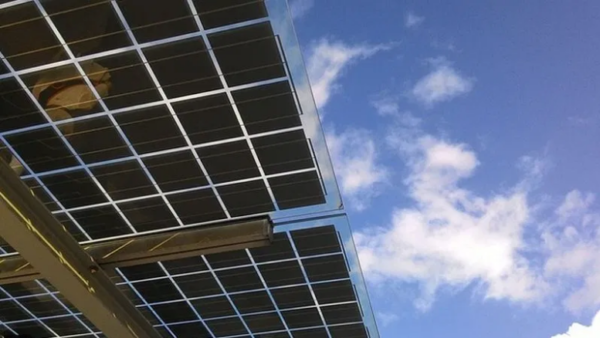
Since transparent solar panels can produce more energy, you need to set aside some money for such panels. Certainly, you can retain the money through its use to produce energy to power fans, light bulbs, and other devices. Well, transparent solar panels are basically meant to avoid the complexity in using traditional solar panels. The establishment of portable solar cells does not involve any tasks in your office or at home.
Once established, these solar panels can provide you with alternative energy in much better quantity than their traditional counterparts. Plus, transparent solar panels are lightweight and portable, meaning you can carry them from one place to another with less effort. In general, using transparent solar cells, you can produce more alternative energy, which can lead to less burning of depleting and polluting coal for energy.
Can this be better?
The advancement in solar energy technology can bring a true revolution in alternative energy generation. Ideas like flexible and paintable solar cells should make the industry a little more energetic.
The bad
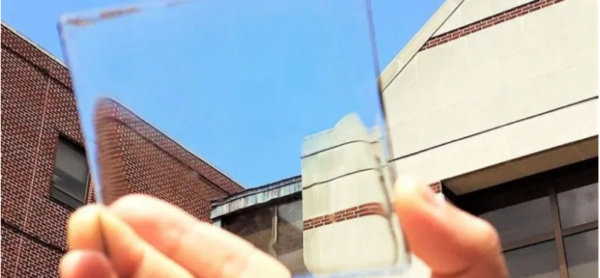
The biggest disadvantage of transparent solar panels is that they can only produce less amount of energy. You will need to purchase a large set of solar cells to power your entire home. Also, you will not be able to power existing electronics in your home with the clear cells. Solar companies often provide special sets of light bulbs and fans to work with the translucent solar cells. It means that you will have to pay more for the included accessories.
Another key drawback is that when the sky is full of clouds, the translucent solar panels won’t be able to produce enough power. Even the accessories you bought together with the cells may not work. It will put you in the dark if you have already disconnected the regular power line relying on solar panels. And, another thing is that translucent solar panels are made of glass, which means that intense care is needed when handling them. Otherwise the panels will break.
Can this be avoided?
To deal with the problem of high prices, governments around the world should take initiatives to sponsor more solar-based technologies. For the problem of lack of sunlight, there should be many more developments in the technology of solar panels itself, to make them more effective in capturing sunlight and heat to produce energy.
the ugly
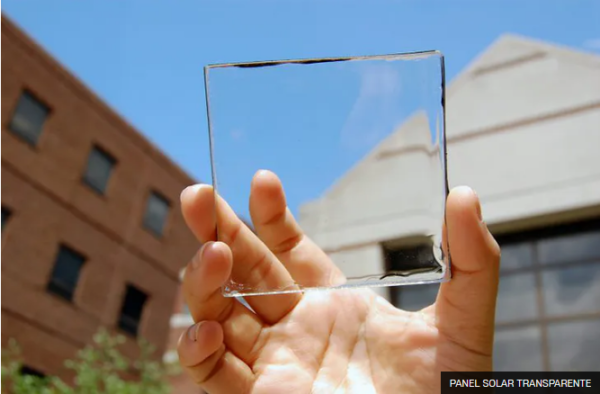
The installation cost of translucent solar cells is high. Since you have to buy separate bulbs and fans to work with the solar cells, you have to pay more for both. In addition, you must also purchase a backup system that includes powerful batteries and adapters to store the energy generated by the solar cells.
In short, you will have to spend a great deal to get all these things and make your dreams of alternative energy functional in your home. The sun and its heat are the source of energy for solar cells. If the sun hides behind the clouds one day, it will be dark at night, because enough energy would not have been produced or stored.
Cost is, as is often the case, among the “critical points” of the most innovative solutions. The price of transparent and semi-transparent modules is certainly one of the limits, although not as “insurmountable” as it used to be.
Another disadvantage is the lower energy performance than conventional photovoltaic modules.
Transparent panels have lower performance efficiency: they vary greatly depending on the type of module, but generally produce at least 10-20% less than traditional modules.
Among the benefits, however, as has already been widely demonstrated, there is the possibility of having, with a product, several characteristics: natural lighting and clean energy production. The other great strength is the extreme versatility of use and the aesthetic beauty that makes them especially sought after.
Watch the video and learn more about transparent solar panels
We have reached the end of the article where you have learned new things about transparent solar panels, I hope you liked it and I thank you for visiting my page. Until next time!!

